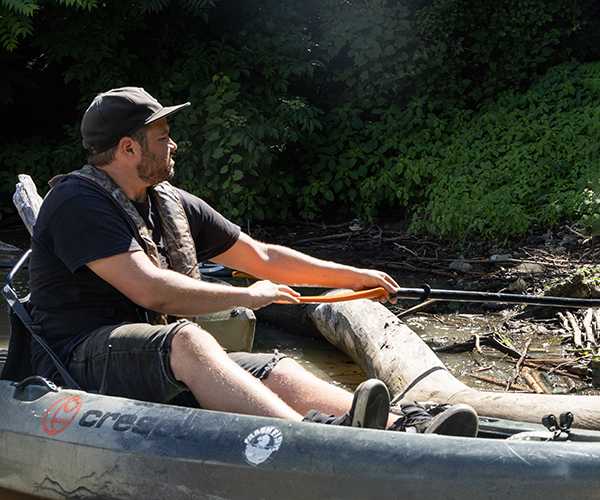Instant gratification, no do-overs, just spontaneous point-and-shoot — there's something uninhibited, appealing and delightfully imperfect about using a Polaroid camera.
"It's tried and true," explains Timothy Logan, who embraced the niche popularity of instant film when he partnered with Tremont camera shop Aperture to launch the 1Hundred Impossible Portraits Project earlier this year.
Logan's goal was to take 100 instant portraits in a single night by photographing those who attended a reception hosted by the camera shop. Because Polaroid film is no longer made, Logan used Impossible Project film, an instant-film brand created by a team of experts who worked at the last standing Polaroid factory in the Netherlands. It's similar to the Polaroid film from the '70s and '80s, but it's more sensitive to light and temperature.
"With Impossible film, you have to work a little harder," Logan explains. "When I started shooting instant film, I learned to pay more attention to what I was doing, how I was composing an image, and how it was going to relate to and show light."
So why deal with instant film in the age of digital photography? It's the whole one-chance-to-make-a-good-impression idea. Logan says he likes the challenge and call for creativity that accompanies this sort of return to analog technology. "You have to know your camera to get the photo you want and so you don't waste film," he says.
Plus, Logan has discovered that taking instant pictures gets people's attention. During the 1Hundred Impossible Portraits event, people waited in line for up to two hours to get their photo taken. At one point, there were more than 200 people in the shop who'd come to check out the project. By the end of the night, Logan had taken 120 instant portraits.
He also noticed that people act differently when posing for a Polaroid. "They expect that you know what you are doing, and they pay attention," he says. "They know it's not digital film."
Logan began experimenting with photography at Kent State University, when he borrowed his dad's 35 mm Canon camera. "The way I tell it is, I got the film developed, and I never saw such terrible photos in my life," he says.
So he kept shooting, and about five years ago he got serious about digital photography and started taking photos of models. "Being able to see someone's personality or get someone to show their personality through photography is interesting to me," says Logan, who works as a senior multi-media artist shooting and editing video at an ad agency. "It's a good creative outlet."
Logan acknowledges that digital photography is the norm, and he still uses it all the time. But when he takes a car trip, he says he always brings at least five analog cameras along and publishes the images on his blog, Exposure Compensation (timothylogan.blogspot.com).
Some of his favorite instant images include sights around Erie, Pa., such as amusement park photos from Waldameer, the North Pier Ligthouse on Presque Isle and Sara's 1950s diner at the gateway to the isle. "Those are places I am familiar with from childhood vacations," he says. "The nostalgic look of instant photos is very fitting."
Of course, he could spend hours at a computer, using photo-editing software to give digital photos that Polaroid feel. But Logan knows he'll never be able to completely replicate the look. As he says, "The only thing that actually looks like Polaroid is an instant photo."
More Info timothylogan.blogspot.com



